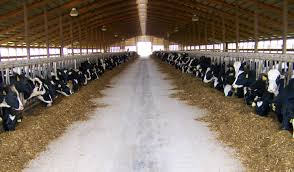This article addresses the housing requirements for sheep and goats. In tropical regions, and even in other areas, it is not a common practice to house sheep and goats in special buildings, as this is of little practical value to traditional rural farmers.
Even in advanced countries, the permanent housing of sheep and goats in environmentally controlled conditions has only become prevalent in the past three decades, enabling year-round production of lambs through the provision of artificial lighting patterns.
These lighting patterns allow ewes to produce up to two sets of lambs per year. If sheep rearing is approached with improved husbandry practices in mind, then constructing appropriate housing becomes essential.
Importance of Sheep and Goat Housing

Some of the key benefits of housing sheep and goats are discussed in the following sections.
1. Protection from Adverse Weather Conditions: The primary function of a sheep and goat house is to protect the animals from adverse weather conditions such as intense sunlight, rain, wind, or cold.
Adult sheep and goats are generally equipped to handle cold temperatures due to the heat produced during fermentation, but young lambs and kids have not yet developed this ability and therefore need protection.
Sheep and goats also do not tolerate being drenched by heavy rain or extreme sunlight, especially when the sun is at its peak. This is evident when they seek shelter from excessive sun or rain.
2. Better Surveillance: Housing sheep and goats together allows for easier monitoring. This enables early detection of sick animals, allowing for timely treatment before diseases spread.
3. Protection from Predators: Providing housing protects sheep and goats from predators such as dogs, snakes, thieves, and other harmful threats.
4. Easier Handling: Housing facilitates easier handling of the animals, making tasks such as catching them and carrying out flock management activities more efficient. This includes practices like isolating rams outside of the breeding season, weaning, and performing tasks such as identification, docking, and castration.
5. Simplified Supplement Feeding: Housing allows animals of the same age or physiological state (such as yearlings, pregnant, fattening, or weaning individuals) to be grouped together. This enhances performance since each animal can receive the appropriate supplements for its specific production needs.
Read Also: The Common Flagellated Protozoans that Infest Fishes
Construction Materials for Housing
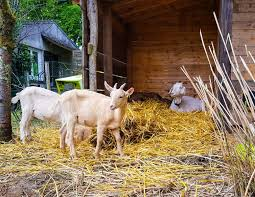
There are several materials available for constructing sheep and goat housing, with the main consideration being the farmer’s budget. The use of concrete, galvanized iron, and wire netting should not be considered the only viable options, as housing made from such materials does not necessarily result in the best performance.
Good results have been observed with sheep and goats housed in shelters made of thatched roofs supported by brushwood.
There is no universal solution. Locally available, renewable materials that are affordable for the farmer often provide better results. The quality of the housing is determined not by the materials used but by the design, location, and care taken in construction, as well as how well the house is maintained.
Local materials that can be used include palm, straw, mud, earth floors, banana leaves, bamboo, rope, and planks.
Covered Shelter with a Yard
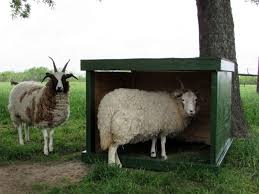
A covered shelter with a yard is considered the best type of housing for sheep and goats, given the local climate, the nature of the animals, and the economic situation of most farmers.
The covered shelter provides protection from adverse weather, while the yard allows space for exercise. In most cases, except during very wet conditions, drinkers and feeding troughs can be left in the yard.
The house should not be located in wet or waterlogged areas. It should be built on firm, even ground with a slight slope to allow rainwater to drain away.
Since sheep and goat houses can produce unpleasant odors, noise, and attract flies, they should not be built in densely populated areas. For larger flocks, the house should be located on the outskirts, with the shepherd’s house nearby.
The roof of the covered shelter should descend to a height of 1 to 1.2 meters above ground level to provide wind protection, with the ridge reaching a height of 1.8 to 2 meters. This allows the shepherd to move easily within the house.
If wooden posts are used, they should be made from insect-resistant varieties and treated with waste oil to prevent insect damage. These posts should be set in concrete bases to protect them from soil moisture. Space requirements for various categories of sheep are as follows:
1. Adult sheep: 0.2 to 0.4 m²
2. Ewe with lamb: 0.3 to 0.5 m²
3. Young sheep: 0.15 to 0.2 m²
4. Ram: 0.5 to 0.75 m²
The yard space should be calculated at 2 to 3 m² per animal, with a minimum yard height of 1 meter.
It is essential to provide a gate with a width of approximately 2 meters to prevent jostling when animals enter or leave the yard.
Read Also: How to Market your Matured Fishes for Profit
Lambing and Kidding Units
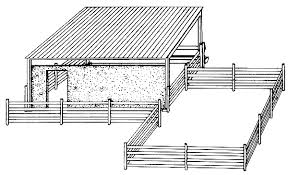
The lambing/kidding unit is a designated area for isolating pregnant ewes and does a few days before and after lambing or kidding. This allows close monitoring for 3 to 4 days, ensuring that both the dam and the lamb/kid are observed closely, and that the lamb/kid receives colostrum.
When constructing the lambing/kidding unit, factors such as the size of the flock, breeding method, and body size of the breed should be taken into consideration. The unit should include feeding racks and water troughs to provide unlimited feed and water to the dam. If this is not feasible, the dam should not be placed in the unit.
Maintaining high hygiene standards is critical in the lambing/kidding unit. Bedding should be renewed after each lambing/kidding, and old bedding should be burned, especially if the floor is made of rammed earth.
Sheep and Goat Handling Unit
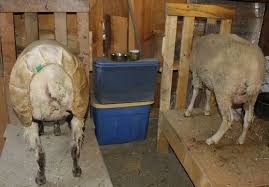
An efficient handling unit, including a race, dipping tank, and footbath, is essential for all sheep and goat farms. It should be designed to allow operations to be completed quickly with minimal helpers and without causing stress to the animals.
Procedures performed in the handling unit include dipping, spraying, foot care, and inoculations. All handling systems consist of the following features:
1. A gathering pen large enough to hold all sheep for treatment
2. A forcing pen that funnels sheep into a race, allowing for sorting into separate pens
3. A dipping bath with a draining pen
4. A footbath
5. Handling or treatment pens
6. Holding pens for sheep after treatment and sorting
The handling unit should be located centrally within grazing areas, on well-drained ground, and be shaded for comfort. All construction materials should be free of sharp edges, and the working area should be sheltered to ensure tasks can be completed in any weather.
This article has emphasized the importance of adequate housing for sheep and goats. Low-income farmers can take advantage of local construction materials available in their environment, saving costs while improving flock performance.
Adequate housing is a necessity for sheep and goat production if improved productivity is to be achieved. Various construction materials are available, and the choice depends on the farmer’s resources and environment. In tropical regions, a covered house with a yard is considered sufficient.
Do you have any questions, suggestions, or contributions? If so, please feel free to use the comment box below to share your thoughts. We also encourage you to kindly share this information with others who might benefit from it. Since we can’t reach everyone at once, we truly appreciate your help in spreading the word. Thank you so much for your support and for sharing!
Read Also: Complete List of Anti-Inflammatory Foods you Should Know About

